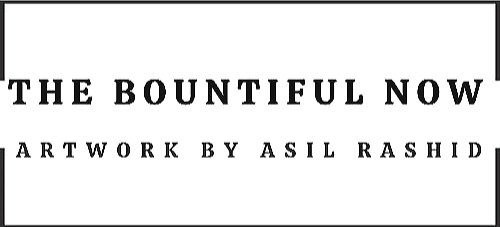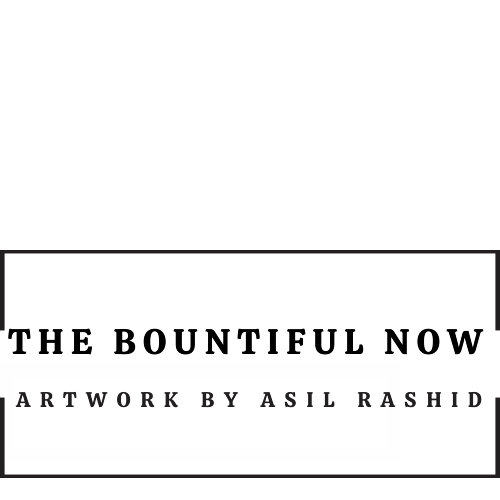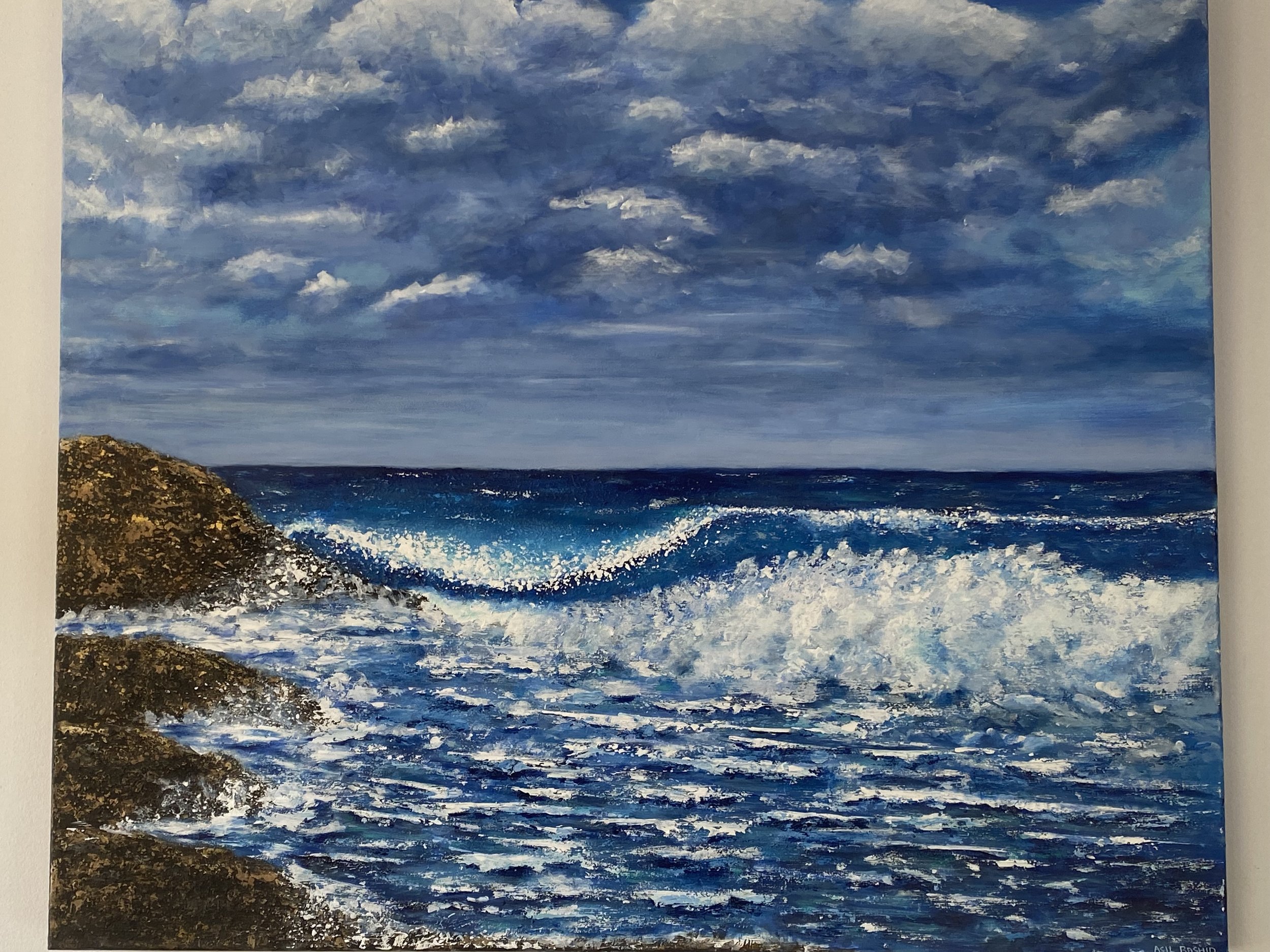Lessons from my long art break
Originally published in 2021
Over the past year, I haven't been painting much. Sporadically, now and then I would dust off my sketchbook and do a few half-hearted sketches but otherwise, I've been in a creative rut. I cringe when I call myself a "creative". I never thought of myself as one even when I started painting. That's pretty much how I've felt all year. Even when I would do my sketchbook practice it felt like a duty more than anything.
Needless to say, all those feelings manifested in a severe case of imposter syndrome, and I went for whole months without even looking at my arts cabinet. The little lie I kept telling myself was that, I am a single mother with a full time job and this past year I've just had a lot on my plate. But that wasn't it. If I'm being perfectly honest, one of the culprits was social media. I went being from being inspired by all the wonderful artists on Instagram to just feeling completely deflated. I would watch one tutorial after the other without even thinking of picking up a brush because what was the point? I would never improve. I just lacked the confidence to go it alone, at least for large pieces. It got to a point where I had to remove IG from my phone.
After a few weeks of my social media cleanse, I felt inspired again. I wanted to go back to my first love, acrylics, as I missed the feel of an acrylic-filled paintbrush particularly on canvas (up until then I had just been doing a lot of watercolor sketches). Sometime around mid-summer, I began painting again. This time, I decided to go as big as possible because I noticed that I get intimidated and limited by the smaller surface area of a sketchbook as I feel like I have to make it as perfect as possible. A larger canvas, on the other hand, allows me room to make mistakes and experiment. At the beginning of my art journey, it was quite the opposite, it felt intimidating and almost impossible to fill all that white space and so the much smaller surface of a sketchbook was perfect to accommodate my baby steps, providing a space for me to not only learn and express myself, but also enabling me to develop a strong foundation for detail. I could spend hours on the intricate details of a pen illustration. I was able to later apply this skill to my larger paintings.
I had two large-sized canvases with printed images on them (donated to me by my brother) that I decided to upcycle by applying gesso and paint. I love recycling old canvasses, it saves me money (you can spend a small fortune buying large size canvasses) and you get a lot of texture by painting over the bumpy surface of the underpainting. So I took the first one (a canvas of roughly 112 cm by 95 cm) and rubbed the surface lightly with sandpaper (just enough to remove the gloss varnish of the printed image), applied around three layers of gesso (I love the textured feel of a heavily gesso'ed canvas) and decided I wanted to do a seascape with a dramatic sky and waves. I searched for royalty-free images on the internet and found one I liked. I cropped the image to avoid any copyright issues, selected only the main compositional elements, sketched them out and then just started painting. Side note: please remember never to copy another painting (unless you are painting from a tutorial and then always remember to credit the original artist); try to use a photograph that you've taken yourself as a reference image or if you are using someone else's, crop it or simply take certain elements from it: composition, colors etc (and then use it as a guide to refer to every now and then rather than copying it as is). Also, try to alter your painting enough so that it looks more like your stylistic rendering of the image rather than an exact replica. Always use a royalty-free image (if you can) and always, always credit the artist or photographer.
Reference image: Original photograph by Dimitris Vetsikas. Found on https://pixabay.com/photos/waves-beach-nature-winter-season-4840890/
I wanted to create a relatively smooth sky so initially, I was quite precious with the clouds and they ended up looking overworked. So I went back over them with dynamic brushstrokes to achieve a wind-swept and slightly thunderous look with grey undertones. I struggled with the rocks and so naturally they look much different from the reference image. Rocks are a challenge for me as I can never get the dips an crevices right, but I applied layers of paint and added texture with a palette knife to give the impression of roughness. Next, I worked on what was by far the most difficult part of the painting for me- the waves. I lost sleep over those waves. I watched one tutorial after another trying to learn how to get the shape of the waves right, analyzed my reference image to death, and yo-yoed back and forth between creating an impressionist piece or something completely abstract. I used a combination of dynamic brushstrokes for the waves and a palette knife, especially for the rolling wave in the middle.
What was supposed to be a relaxing experience turned into quite a stressful 4-month endeavor. I still hadn't reached that flow state that artists raved about. In fact, I became more and more frustrated because after a whole day of working at a laptop, I would find myself doing the same thing when it was time to paint; I would stare at the reference image on my personal laptop, trying to figure out what was the best way to capture those waves.
In the end, I came to a realization about the process. I realized that I was trying so hard to make my waves look a certain way which didn't really align with the composition or my vision. When I decided to just follow my own intuition and trust my own vision, I became more in synch with the painting itself. When I put my reference image away, and put on my headphones and turned on my music, I experienced moments of joy. Admittedly, there were many times during the process when I felt like I was just correcting mistakes or moving the paint aimlessly across the canvas but I kept at it until I got it close enough to what I wanted.
At any rate, I finally completed the painting ( and I use that word very loosely, because in my opinion, a painting is never complete) in October. I was not 100% satisfied with it but I had reached the end of the road with it and I needed some time and distance from it. So I called it done, signed it, and hung up it over my dining area, (hoping that this final act would prevent me from messing around with it any further), and just waited for the multiple layers to dry so I could apply some varnish.
"Rolling": First version completed in October 2021
A month or so later, I moved on to the next painting. I repeated the same process as the first one: I lightly sandpapered an old canvas (roughly 90 cm by 90cm), applied 2 or 3 layers of gesso and then paint. This time, I wanted a floral piece bursting with color. I wanted a change from the blues, whites and browns of my seascape. I sketched the focal point: three large peonies with flowers arranged in a bouquet, and a neutral background. This time, around, though, I had learnt my lesson: Aside from initially looking at a few images of peonies (to get a sense of the basic shapes), I simply started painting. I didn't even have a clear image in my head as to how I wanted it to turn out. I just knew I wanted a floral bouquet with three peonies as the focal point and many filler flowers and foliage around, and I wanted to keep my color palette relatively simple...mostly different hues of pinks, purples, blues and of course, green for the leaves. As I was painting it, I added elements that spoke to me. For example, I decided I wanted lilacs and I used a finger painting technique to achieve highlights and shadows on their elongated shapes. I also wanted cosmos-looking flowers and since I had grown cosmos in my balcony garden over the summer, I simply referred to the photos I myself took of my garden. I used a palette knife to give them a slightly textured look. As for the other filler flowers, I used a filbert brush and layered highlights, mid-tones and shadows to achieve dimension. I trusted myself and all that I had learnt about painting florals and how to achieve volume and depth with just a few simple strokes.
"Cacophony". Acrylic on canvas 90cm by 90 cm
Remember that first painting, the seascape? I decided to go back and apply the same abandon to it that I applied to my floral piece. But this time around, (with no reference image in sight), I enjoyed it more because I didn't approach it with a feeling of anxiety, but rather excitement. I simply did the best I could with the elements I wanted to improve, without overworking it and left it there. To that end, I believe it's a much stronger painting than it was before. Is it perfect? Of course not. Is it exactly what I had in mind? Not really. Did I achieve the atmospheric perspective that I was aiming for? Perhaps not. But at least, it's mine. My style, my take on it. There are elements that I like about it: the sky and clouds, the rolling wave in the middle. Other elements I might need to improve for future paintings: the rocks, the other background and foreground waves etc. But I'm fine with that, because what I got out of it was the beginnings of my style emerging, bearing witness to an intimate conversation between the paintbrush and the canvas, enjoying the unrestrained brushstrokes back and forth and the feel of texture, and allowing the painting to be what it is - my impression of what my eyes or my mind sees, rather than a photorealist rendering of a reference image. That is so much more rewarding to me than perfection. At any rate, it got me unstuck again, it got me painting again, and more importantly, it gave me the confidence I needed to continue with my art journey; so much so that I went out and bought more canvasses and art supplies because my mind was buzzing with ideas for future paintings.
Am I saying that I will never paint from a reference image again? No. I will likely use reference images again but only as an initial guide, not as a visual crutch that I heavily depend on because I have more confidence now than I did a year ago. A strange thing happened whenever I forced myself, with crushed spirits, back to the painting process after scrolling through amazing artworks on social media. My spirits lifted again, my confidence, while not wholly restored, was renewed enough that I was able to focus for a couple of hours on the painting in front of me, rather than all the other paintings that I thought I wanted to emulate. I realized at the end of every painting session, that my artwork is unique because it came from me, I told myself that even the artists I admired had bouts of low self-esteem every now and then and that they got to where they were by pushing through those negative feelings and getting back into it.
Furthermore, I discovered that not every aspect of my piece has to make "sense". It is, after all, my impressionist take on an image. I'm not going for photorealism here. While I admire the skill and talent involved in those hyper-realistic artwork, I'm not trying to emulate them. The impressionist artists that I admire don't labor over every element in their artwork, they just let a few simple brushstrokes convey the general message. Is every stroke and detail where it should be? No. But that's what makes a painting alive, something that can jump out at you, or rather something you can jump into.
Final version (I hope!!): Completed December-ish 2021
The greatest thing I've learnt from all this, though, is that practice does not make perfect, it makes progress. I've seen an improvement throughout the different stages of my seascape painting. I am more motivated to try larger pieces and to allow myself to just play. My artwork is not perfect, and I'm sure it might not appeal to many people. But then again, I didn't get into art for the praise or even the money. I simply fell in love with it, as imperfect or amateur as I am. There are moments when I feel disenchanted with it, when I'm riddled with self-doubt, moments when it's ok to take a break and step away for a while. After all, creativity is regenerative and regenerating. I always come back to it, though, because it is the only thing that feels like home to me.
As for those niggling thoughts, just remember what Vincent Van Gogh said: "If you hear a voice within you say you cannot paint, then by all means paint and that voice will be silenced."





